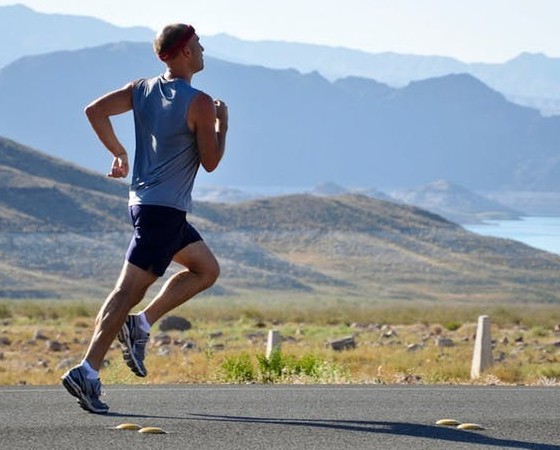Buteyko Breathing is a method of breathing to address the chronic hyperventilation that is at the root of many diseases and illness. When an individual is very sick, it is essential to practice the simple breathing exercises to improve your health. When your control pause is below 20 seconds, you will see the most improvement with more Buteyko breathing exercises. As your control pause improves, exercise with nasal breathing is going to be the key factor in your progress. You will start to see amazing benefits and progress as you combine the Buteyko Breathing Method and Exercise.
Most people simply do a variety of cardiovascular endurance exercises and activities without a system or method that provides clear results. Keeping track of your control pause can help to ensure that you will see the health benefits that come from cardiovascular exercise.
The Buteyko breathing method is a system that is based on a body oxygen test known as the control pause. There are amazing health benefits for individuals who are able to achieve a 60+ control pause for the body oxygen test. Some of these benefits include 4 hours of deep sleep naturally, a natural desire to exercise, increased endurance and VO2 max. To experience these benefits, you must retrain your automatic (unconscious) breathing 24/7 to be nasal and diaphragmatic. 
Cardiovascular Endurance
Cardiovascular endurance is the ability of the heart to provide enough oxygen to muscles during physical exercise for an extended period. Elite endurance athletes always have a high VO2 max. It is usually over 70 ml/kg/min for males. VO2 max is the maximum O2 consumption measured in ml of O2 per kg of body weight in 1 minute. VO2 max is mainly an inherited factor. However, whatever your current VO2 max may be, through optimum training and correct breathing 24/7, you can increase it up to 15-20 units.
Oxygen is provided through respiration. Therefore, it is essential to discover the ideal or optimum breathing patterns at rest and during exercise that provide maximum O2 amounts for the muscles.
The clinical experience of over 150 Soviet and Russian medical doctors with sick patients and elite athletes suggest that people with frequent and deep breathing at rest have reduced cardio fitness and lower O2 levels in their cells.
As you pay close attention to the breathing of very fit and healthy athletes at rest and during exercise, you will discover that they breathe slower and less in both situations.
Millions of Americans believe that if you breathe deeper and more air, it improves the O2 delivery to the cells. However, hundreds of clinical studies proved that hyperventilation reduces the O2 transport to the body cells.
Breathing Factors
There are three main factors that produce negative impacts on the body oxygenation and cardiovascular endurance. These include thoracic (chest) breathing, mouth breathing (during exercise and sleep), and habitual over breathing (or breathing more than necessary. These three factors reduce body oxygenation and worsen sports performance, physical health, muscular endurance, sleep and the recovery from injuries. These factors can also impact digestion, metabolism and reduce overall health. Reversing these lifestyle factors can improve VO2 max and cardiovascular health.
Our unconscious breathing pattern at rest is the main factor that defines the body’s cell oxygen levels. When we breathe faster and deeper at rest (also known as chronic hyperventilation), we have less oxygen in the body cells and less motivation and desire to exercise. Additionally, over breathing, which is present in over 90% of modern athletes, leads to reduced cardiovascular endurance. It also impairs the recovery after workout and injuries. Overbreathing leads to chronic diseases.
Buteyko Breathing to Improve Cardio Fitness
Increasing your cardiorespiratory and cardiovascular endurance can be done by practicing Buteyko breathing exercises while at rest. This will slow down the unconscious breathing pattern. You need to breathe so slowly that your body oxygenation gets to 50-6- seconds 24/7. When you achieve a comfortable control pause of 50-60 seconds 24/7, you will be very fit and enjoy exercise and greatly improved physical health.
To achieve a super fit health status, you need to get up to 2-3 minutes for the body oxygen test by slowing down your automatic breathing pattern to 3-5 breaths per minute at rest. A person can improve their VO2 max by 5-7 units just by changing their basal (unconscious) breathing pattern. 
Exercises for Buteyko Breathing
If you are starting your exercise program from a state of sickness, the best exercise that you can do to improve your health is walking. While you walk, you may want to incorporate the Buteyko Steps exercise. This is a very simple exercise where you exhale through your nose, plug your nose and close your mouth and count how many steps that you can comfortably take before you feel the need to breathe. The Steps exercise is ideal because it can be done during the day when you are at work or taking a walk. Walking is gentle enough for beginners.
As your control pause increases, you should challenge yourself to some gentle jogging. You should lengthen your periods of exercise. This will help to increase your control pause and your VO2 max. Any exercise will be beneficial as long as you are focusing on nasal breathing.
Control Pause and Cardio Endurance
The control pause measures the amount of oxygen that is in the body. It relates directly to your level of cardiovascular health and fitness. The following chart gives you an idea of what level of fitness you can achieve with your control pause. You can work to improve both your control pause and your cardiovascular endurance through exercise with nasal breathing combined with Buteyko breathing exercises.
| Control Pause | Breathing pattern | Cardiovascular Endurance Level |
| 1-5 s CP | Extremely heavy breathing pattern | At 1-5 seconds, physical exercise may be life-threatening. Acute exacerbation may occur at any moment due to the low body oxygen levels. No performance. |
| 5-10 s CP | Heavy breathing pattern | There is a potential for asthma attacks, stroke, angina pain, seizures, etc. Exercise may exacerbate health problems. Poor performance |
| 11-20 s CP | Inefficient breathing pattern |
At 11-20 seconds, many people experience and complain about chronic fatigue. They can walk with nasal breathing for hours on a flat surface. Fit athletes can exercise with mouth breathing. Compromised cardiovascular endurance and health. |
| 20-30 s CP | Deep breathing pattern | No complaints about fatigue. Physical activity is well tolerated, but requires considerable psychological effort. Reduced cardiovascular endurance. |
| 30-40 s CP | Small degree of hyperventilation | Exercise at this level is comfortable and relatively easy. However, a system of daily exercise routine requires self-discipline. Subnormal level of cardiovascular endurance. |
| 40-60 s daily CP, less than 40 s morning CP | Below normal breathing pattern | Nasal breathing during exercise is natural and comfortable. Exercise is easy and pleasant. Near normal levels of cardiovascular endurance and performance. |
| About 60 s morning CP | Normal breathing pattern | At this level, exercise becomes joyful and people crave exercise. The levels of energy are very high. Normal cardiovascular endurance. |
| Over 90 s MCP | Light breathing pattern | At over 90 seconds of a morning control pause, people have states of super health. Enhanced cardiovascular endurance. |
Cardio Endurance for Super Fitness
For individuals who are interested in achieving super fitness levels, such as elite athletes, there is a device that can help to improve your training. The elevation training mask can help to maximize exercise benefits. It allows one to increase exercise efficiency nearly two times in comparison with exercise with strictly nasal breathing.
I found that the elevation training mask was the fastest way to improve your control pause for people who are able to exercise. It strengthens your diaphragmatic muscles as you exercise by reducing the air flow. You will be exercising with reduced breathing. Many Buteyko Breathing practitioners have tested this device and recommend it to their students.

I think a lot of people really underestimate the power of being able to control your breathing. Correct me if I’m wrong, but the core behind meditation is based on focusing on your breathing, right? It does make sense that it’s important for exercise, though.
I do have a question for you though. As far as habitual over breathing is concerned how can you tell if you are breathing too quickly, though?
Measure your breath while at rest. If your control pause is less than 20 seconds, you are over breathing. For optimal health, you should be able to hold your breath about a minute. For good health, it will be about 30 to 40 seconds. At twenty seconds, you’ll have some health problems. Less than that and you likely see a doctor on a regular basis. The retraining will help you to reduce your breathing and bring you to optimal health.
Oh wow Melinda, this is new information for me, I had to read twice to get the gist of it!
I recently started doing yoga which as they say is based on breathing so I got more curious on learning about breathing, this article has opened my eyes to the importance of breathing, knowing our patterns. As I write this I am observing my breathing lol!
I will come back here, I want to learn more and to use the butyeko breathing.
Great Article with life saving information
Anastacian
Anastacia
Wow,
I always knew the importance of breathing, especially if you are practising yoga, but I haven’t known the implications behind if you have a high pause rate.
May I ask a silly question here? I love to meditate and practise yoga but I hate running. Is this fine? Do they have any implications in any occasions?
Wow! Great information!
I wonder if thos would help with high blood pressure? I’m gonna send this article to my dad.
Connie B.
I think it can help those with high blood pressure!
Is control pause directly proportional to max Vo2? In other words is it possible to have high control pause and have low Vo2 or vice versa?